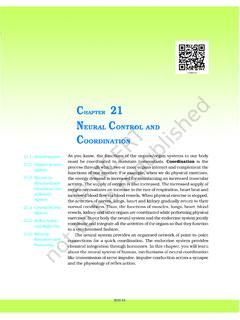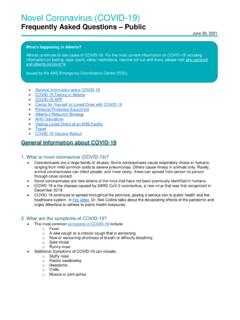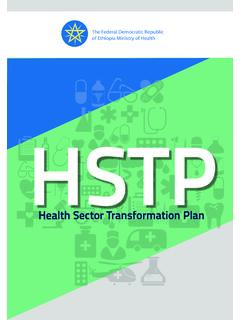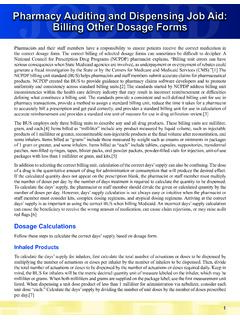Transcription of Astronaut Health and Performance - NASA
1 Human travel to Mars and beyond is no longer science shuttle research we know how the body changes, what weneed to do to fix some of the problems or better yet prevent them,the importance of monitoring Health , and how to determine the human body s Performance through the various sequences of launch,spaceflight, and landing. Basically, we understand how astronautskeep their Performance high so they can be explorers, scientists, and change physically during spaceflight, from their brain,heart, blood vessels, eyes, and ears and on down to their cells.
2 Many types of research studies validated these changes anddemonstrated how best to prevent Health problems and care for theastronauts before, during, and after a shuttle flight, astronauts experienced a multitude ofgravitational forces. Earth is 1 gravitational force (1g); however,during launch, the forces varied from 1 to 3g. During a shuttle s return to Earth, the forces varied from nearly zero to , overapproximately 33 minutes, during the maneuvers to return. In all, the shuttle provided rather low gravitational forces compared withother rocket-type launches and most pervasive physiological human factor in all spaceflight,however, is microgravity.
3 An Astronaut perceives weightlessness andfloats along with any object, large or small. The microgravityphysiological changes affect the human body, the functions within thespace vehicle, and all the fluids, foods, water, and contaminants. We learned how to perform well in this environment through the Space Shuttle Program. This information led to improvements inastronauts Health care not only during shuttle flights but also for theInternational Space Station (ISS) and future missions beyondlow-Earth orbit. Shuttle research and medical care led directly toimproved countermeasures used by ISS crew members.
4 No shuttlemission was terminated due to Health Scientific DiscoveriesAstronaut Healthand PerformanceIntroduction Helen LaneLaurence YoungHow Humans Adapt to Spaceflight: Physiological ChangesVision, Orientation, and Balance William PaloskiSleep Laura BargerCharles CzeislerMuscle and ExerciseJohn CharlesSteven PlattsDaniel FeebackKenneth BaldwinJudith HayesCardiovascular John CharlesSteven PlattsNutritional Needs in SpaceHelen LaneClarence AlfreyScott SmithImmunology and Infectious DiseasesBrian CrucianSatish MehtaMark OttDuane PiersonClarence SamsHabitability and Environmental HealthHabitability Janis ConnollyDavid FittsDane RussoVickie KloerisEnvironmental Health John JamesThomas LimeroMark OttChau PhamDuane PiersonAstronaut Health
5 CarePhilip StepaniakHow Humans Adapt to Spaceflight:Physiological ChangesVision, Orientation, and BalanceChange in MicrogravityGravity is critical to our existence. As Earthlings, we have come to rely onEarth s gravity as a fundamentalreference that tells us which way isdown. Our very survival depends onour ability to discern down so that wecan walk, run, jump, and otherwisemove about without falling. Toaccomplish this, we evolved specializedmotion-sensing receptors in our innerears receptors that act like biologicalguidance systems.
6 Among other things,these receptors sense how well ourheads are aligned with gravity. Ourbrains combine these data with visualinformation from our eyes, pressureinformation from the soles of our feet(and the seats of our pants), andposition and loading information fromour joints and muscles to continuouslytrack the orientation of our bodiesrelative to gravity. Knowing this, ourbrains can work out the best strategiesfor adjusting our muscles to move ourlimbs and bodies about without losingour balance. And, we don t even haveto think about the end of launch phase, astronautsfind themselves suddenly thrust into the microgravity environment.
7 Gravity,the fundamental up/down referencethese astronauts relied on throughouttheir lives for orientation andmovement, suddenly disappears. As you might expect, there are anumber of immediate , perceptual illusions,motion sickness, poor eye-head/eye-hand coordination , and whole-bodymovements are issues each astronauthas to deal with to some thing we learned during the shuttleera, though, is that astronauts nervoussystems adapt very quickly. By thethird day of flight, most crew membersovercame the loss of gravitationalstimulation.
8 Beyond that, mostexhibited few functionally significantside effects. The downside to this rapidadaptation was that, by the time ashuttle mission ended and theastronauts returned to Earth, they hadforgotten how to use gravity fororientation and movement. So, for thefirst few days after return, they sufferedagain from a multitude of side effectssimilar to those experienced at thebeginning of spaceflight. During theEarth-readaptation period, thesepostflight affects limited some types ofphysical activities, such as running,jumping, climbing ladders, drivingautomobiles, and flying Space Shuttle particularly when carrying one of its Spacelab or Spacehab modules and during the human- Health -focused,extended-duration Orbiter medicalmissions (1989 through 1995) provided unique capabilities to studyneurological adaptation to space.
9 By taking advantage of the shuttle sability to remove and then reintroducethe fundamental spatial orientationreference provided by gravity, manyresearchers sought to understand the brain mechanisms responsible fortracking and responding to thisMajor Scientific Discoveries371 Laurence Young, ScDPrincipal investigator or coinvestigator on seven spacemissions, starting with STS-9 (1983).Alternate payload specialist on STS-58 (1993). Founding director of the National Space Biomedical Research Program professor of astronautics and professor of healthsciences and technology atMassachusetts Institute of Technology.
10 The Space Shuttle Program provided a golden era for life sciences research. The difference between science capabilities on spacecraft before and after theSpace Shuttle is enormous: it was like doing science in a telephone booth in theGemini-Apollo era while shuttle could accommodate a school-bus-size significantly added to the kind of research that could be done in space. We had enormous success in life sciences, especially with the Spacelabs, forquality of instrumentation, their size, and opportunity for repeated measurementson the astronauts on different days of flight and over many different flightsincluding Space Life Sciences flights 1 and 2 and ending with Neurolab.

















